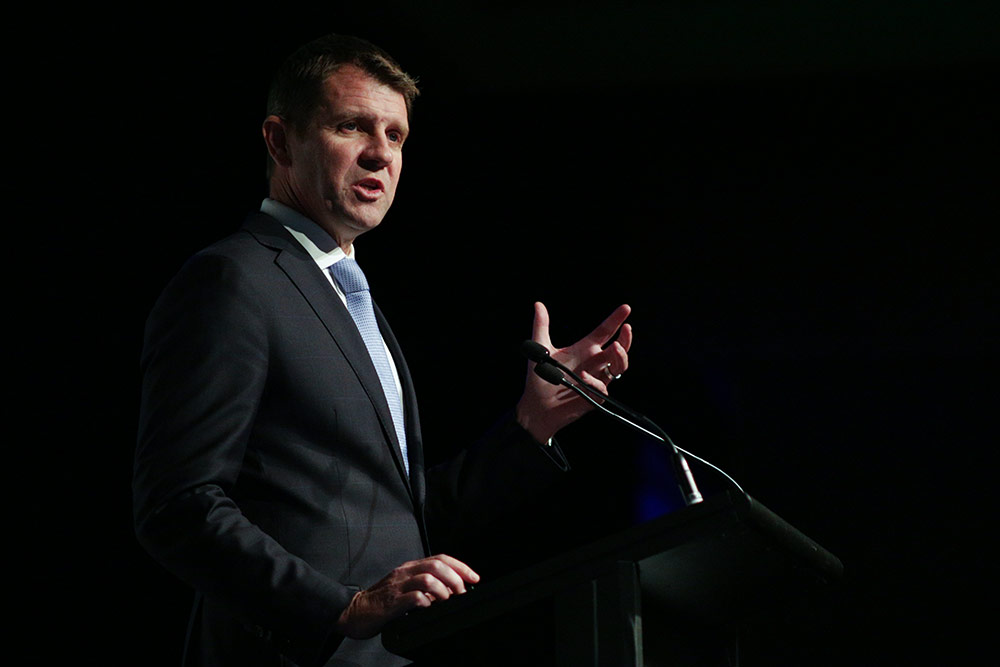
Outgoing NSW Premier Mike Baird. Image: Paul Hemsley/GovNews.
Greyhounds, nanny state lockout laws, TAFE cuts and amalgamations. That’s probably all you’ll hear from some commentators in the news and social media about New South Wales Premier Mike Baird’s legacy.
As the NSW Coalition leader made a shock announcement on 19th January, 2017 that he would be quitting politics cold turkey, media and pundits alike quickly speculated about what led to this baffling decision.
After Barry O’Farrell resigned from the leadership in 2014 over a gifted bottle of plonk in the hopes of avoiding a potential ICAC investigation, Mr Baird emerged as a leader who would oversee some of the most ambitious reforms and public works projects in Australian modern history.
His popularity was reinforced by the resounding Coalition victory at the 2015 state election, where afterward his momentum and reputation as a reformer made him seem “unstoppable”.
His push for better infrastructure, transport initiatives, expanding state government offices to outer suburbs, a stake in Sydney’s second airport, and a raft of new technology solutions put his leadership at the forefront of boosting the state’s innovation street cred.
As his term progressed however, controversial state government initiatives began to chip away at his popularity, particularly the forced council mergers, which incurred the wrath of the local government sector. Not to mention the lockout laws, which did nothing but infuriate law-abiding patrons and local businesses.
But the big issue that really exposed vulnerabilities in Mr Baird’s leadership was the unilatural greyhound racing ban, which attracted passionate support from animal welfare advocates, but enraged business owners who were struck with the frightening prospect of having to “liquidate their stock” or move business interstate.
Mr Baird was strong in his resolve to push the moral ethics of the issue, but it persisted in being a political thorn in his spine, which probably contributed to his inevitable downfall.
Experts and pundits speculate that Treasurer Gladys Berejiklian is Mr Baird’s likely successor. If her bid for the leadership next week is successful, it will make her the second female NSW Premier after Kristina Keneally, and she would be farming from her extensive portfolio experience in transport, industrial relations and the Treasury.
She, or whoever takes the top job will be free from some of Mr Baird’s accumulated baggage, and will be presented with opportunities to expand upon the government’s public works initiatives and ongoing plans to decentralise state government employees from Sydney’s CBD to the outer ‘burbs like Paramatta and Liverpool.
Even with Mr Baird gone, NSW will of course continue its ambitious plans for make the state an example of good budgeting, technological innovation and the “engine room” of the Australian economy, as he proclaimed in his CeBIT 2016 presentation.
In any case, we wish Mr Baird all the best in his post-political pursuits, and a lot of luck to the next leader.





